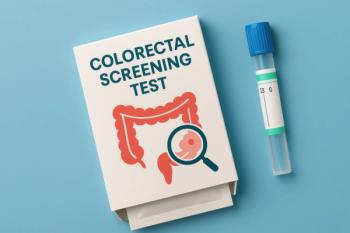
Personalized Medicine Would Offer Great Benefits to Patients With PAH
In a recent review, researchers overviewed the challenging aspects of treating pulmonary arterial hypertension (PAH), highlight the genetic and etiological variability, and advocate for research to expand personalized medicine.
A review article published in
Currently, there is no cure for PAH other than a complete lung transplant. While this constitutes a great challenge in the realm of PAH, an equally great challenge occurs in physicians’ abilities to predict the most beneficial treatment methods for their patients. At present, there are multiple drug classes that are specific to the treatment of PAH; however, a multitude of components can impact how effectively a patient will respond to certain therapeutics.
At present, there are 13 PAH-specific FDA-approved drugs across 4 main drug classes: endothelin receptor antagonists (ERAs), phosphodiesterase type 5 inhibitors (PDE5i), prostacyclin analogs/prostacyclin receptor agonists, and soluble guanylate cyclase (sGC) stimulators.
For the treatment of PAH, each drug is typical used alongside another from a different class; however, these combinations do not work equally across PAH subtypes. The subtypes of PAH include idiopathic (IPAH, which has no known cause), heritable (HPAH, associated with genetic risks such as bone morphogenetic protein receptor type 2 [BMPR2] mutation), PAH linked with other conditions (APAH), and
An important consideration to have with patients is their responsiveness to pulmonary vasodilators. Few patients with PAH are considered vasoresponsive but this quality can dramatically improve outcomes and expand treatment options to include calcium channel blockers (CCBs). Vasoreactivity, however, can diminish over time genetic variations—such as BMPR2 mutations—can reduce one’s likelihood of being vasoresponsive. Testing for vasoreactivity is also generally left for patients with HPAH, IPAH, or drug-induced forms where CCB treatments are considered. The authors reenforce the importance of accurate vasoresponsive diagnoses because the use of CCBs in nonresponsive patients can have drastic consequences that increase mortality risks.
Sex differences have also been well-recorded in PAH: Women are more commonly affected, although men experience worse survival rates. Some research, the authors mention, has begun indicating estrogen levels in the pathology of PAH; however, this information is conflicting. They cite a study suggesting higher levels of estrogen can provide benefits for PAH severity and outcomes, yet this same study indicated 5-year survival in men was negatively affected by higher amounts of estrogen. Additionally, women administered ERAs appear to have improved outcomes compared with men given the same treatment.
Racial and ethnic distinctions and disparities have also been indicated in PAH studies; however, these data, too, present conflicting findings. The authors note analyses that find mortality is higher in nonwhite patients with PAH—despite White patients constituting two-thirds of cases—yet Hispanic and Native American populations appear less impacted by mortality than White patients. These reports are posited against studies with contradicting claims that suggest no race-based differences in survival exist at all.
To put the controversy of racial and ethnic analyses in PAH in perspective, the authors state “It is important to remember that any possible drug response differences between races or ethnicities may not represent biological differences, but may be more explained by lack of representation in clinical trials and by systemic racial/ethnic disparities in healthcare systems, including differences in socioeconomic status, education level, access to care, quality of care, and environmental exposures. Historically, the biological construct of ancestry has been conflated with the sociocultural constructs of race and ethnicity. This has led to erroneous conclusions that genomic associations with disease or drug response are driven by biological rather than social influences.”
To expand on these intricacies further, genetic variations are crucial for considering alongside sex and race. Endothelin-1 (ET-1) levels, which are higher in Black patients, are part of a working theory to explain observed responses to ERAs. Aside from ET-1 and the BMPR2 mutation, researchers are also evaluating genetic variations that code for enzymes with the ability to metabolize PAH drugs. A lot of medications for PAH are metabolized by cytochrome P450 (CYP) enzymes and testing for variability in patients can impact their options for effective treatments. Additionally, some variations like those in carbohydrate sulfotransferase 3 (CHST3) can put patients at a higher risk for adverse events such as bosentan-induced liver injury.
As the wealth of data indicates, sex-, race-, and genetic-based differences represent understudied areas in the realm of PAH. The risk factors and treatment options available based on patient variability demonstrate the dire need for the development of personalized medicine in PAH. Testing for genetic variation and gathering adequate data on sex- and race-based trends in this disease could provide great benefits to patients with PAH and reduce their risks of harm.
Reference
Miller E, Sampson CUO, Desai A, Karnes JH. Differential drug response in pulmonary arterial hypertension: the potential for precision medicine. Pulm Circ. 2023;13(4):e12304. doi:10.1002/pul2.12304
Newsletter
Stay ahead of policy, cost, and value—subscribe to AJMC for expert insights at the intersection of clinical care and health economics.













































